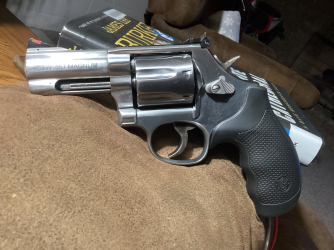halfmoonclip
Member
- Joined
- Sep 23, 2003
- Messages
- 262
- Reaction score
- 236
A buddy just got a 32 H&R Mag Centennial, loves shooting it, but was finding it expensive to feed.
He brought it over, while I explained the basics of reloading.
I rolled it through a couple times, and was absolutely dazzled; the trigger was very smooth, and relatively light.
Have a bunch of Centennials, and routinely tune/respring them. Mine are better, but not much better.
Has something changed in Smith's J-frame triggers, or was this a one-off lucky bunch of parts?
Liked the gun, but really don't want to start another caliber.
Moon
He brought it over, while I explained the basics of reloading.
I rolled it through a couple times, and was absolutely dazzled; the trigger was very smooth, and relatively light.
Have a bunch of Centennials, and routinely tune/respring them. Mine are better, but not much better.
Has something changed in Smith's J-frame triggers, or was this a one-off lucky bunch of parts?
Liked the gun, but really don't want to start another caliber.
Moon

